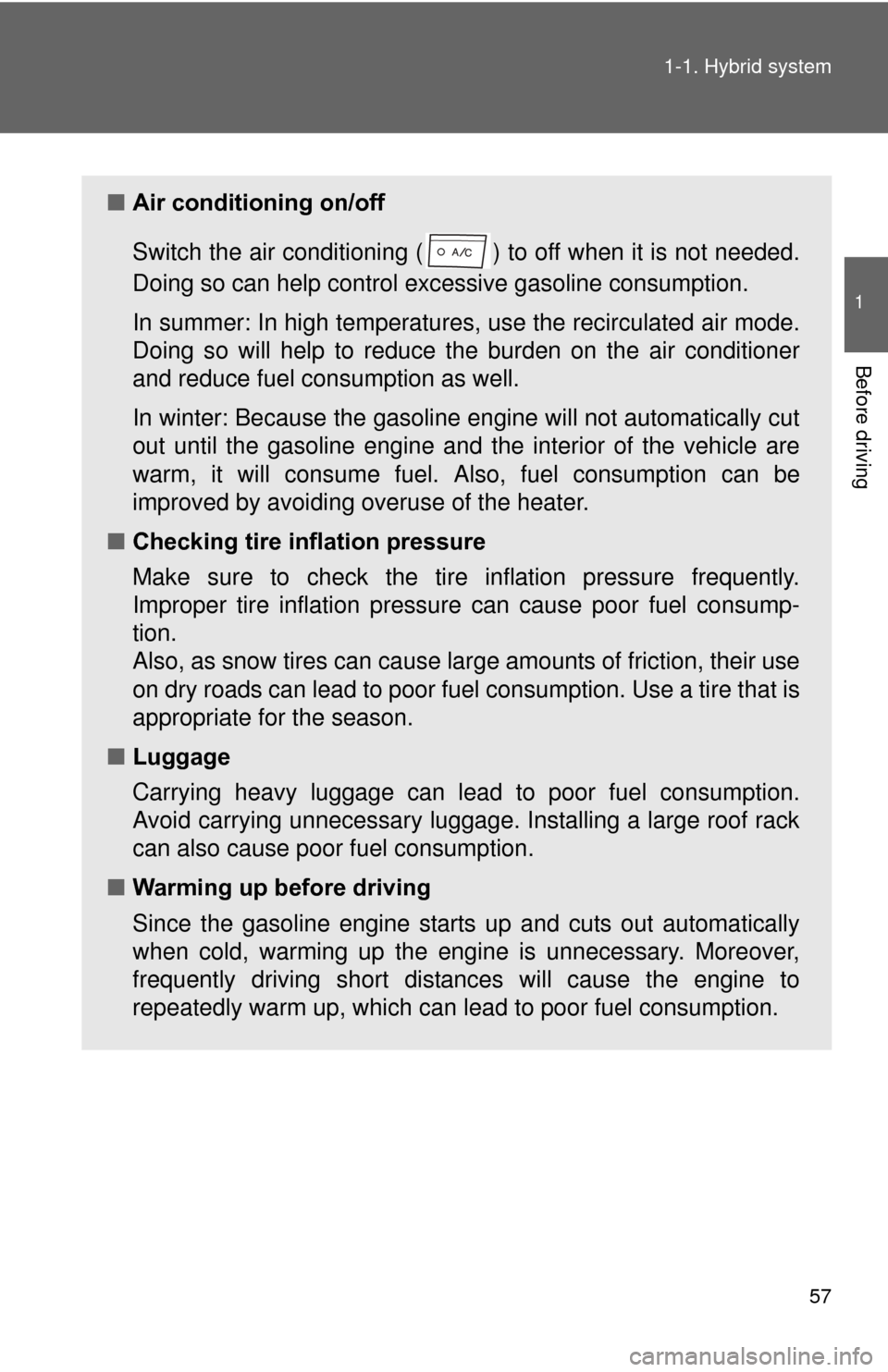Page 5 of 636

1
2
3
4
5
6
7
5
4-1. Maintenance and careCleaning and protecting the vehicle exterior............ 396
Cleaning and protecting the vehicle interior............. 399
4-2. Maintenance Maintenance requirements ..................... 402
General maintenance.......... 405
Emission inspection and maintenance (I/M)
programs........................... 409
4-3. Do-it-yourself maintenance Do-it-yourself service precautions ....................... 410
Hood ................................... 413
Positioning a floor jack ........ 416
Engine compartment ........... 419
12-volt battery ..................... 431
Tires .................................... 437
Tire inflation pressure ......... 447
Wheels ................................ 451
Electronic key battery.......... 454
Checking and replacing fuses ................................. 456
Light bulbs........................... 467 5-1. Essential information
Emergency flashers............ 484
If your vehicle needs to be towed........................... 485
If you think something is wrong ............................ 492
5-2. Steps to take in an emergency If a warning light turns on or a warning buzzer
sounds.............................. 493
If a warning message is displayed ...................... 507
If you have a flat tire ........... 523
If the hybrid system will not start ............................ 538
If you lose your keys........... 540
If the electronic key does not operate properly ......... 541
If the 12-volt battery is discharged........................ 543
If your vehicle overheats .... 549
If the vehicle becomes stuck ................................. 554
If your vehicle has to be stopped in an
emergency ....................... 556
4Maintenance and care5When trouble arises
Page 9 of 636
9
Fuel filler door
P. 131
Rear turn signal lights
P. 211
Rear window defoggers P. 346
Tires
●
Rotation
● Replacement
● Inflation pressure
● Information
P. 437
P. 523
P. 569
P. 575
Rear side marker lights
P. 250
Tail lights P. 250
Camera*Side doors P. 87
Back door P. 93
Rear window wiper P. 262
: If equipped
*: Refer to “Display Audio System Owner’s Manual”
or “Navigation System Owner’s Manual”.
License plate lights
P. 250
Page 57 of 636

57
1-1. Hybrid system
1
Before driving
■
Air conditioning on/off
Switch the air conditioning ( ) to off when it is not needed.
Doing so can help control excessive gasoline consumption.
In summer: In high temperatures, use the recirculated air mode.
Doing so will help to reduce t he burden on the air conditioner
and reduce fuel consumption as well.
In winter: Because the gasoline engine will not automatically cut
out until the gasoline engine and the interior of the vehicle are
warm, it will consume fuel. Also, fuel consumption can be
improved by avoiding overuse of the heater.
■ Checking tire inflation pressure
Make sure to check the tire inflation pressure frequently.
Improper tire inflation pressure can cause poor fuel consump-
tion.
Also, as snow tires can cause lar ge amounts of friction, their use
on dry roads can lead to poor fuel consumption. Use a tire that is
appropriate for the season.
■ Luggage
Carrying heavy luggage can lead to poor fuel consumption.
Avoid carrying unnecessary luggage. Installing a large roof rack
can also cause poor fuel consumption.
■ Warming up before driving
Since the gasoline engine starts up and cuts out automatically
when cold, warming up the engine is unnecessary. Moreover,
frequently driving s hort distances will ca use the engine to
repeatedly warm up, which can lead to poor fuel consumption.
Page 181 of 636

181
2-1. Driving procedures
2
When driving
Starting off on a uphill
Firmly set the parking brake with the brake pedal depressed,
and then shift the shift position to D.
Release the brake pedal and gently depress the accelerator
pedal.
Release the parking brake.
■When starting off on a uphill
The hill-start assist control is available. ( P. 301)
■ Driving in the rain
●Drive carefully when it is raining, because visibility will be reduced, the
windows may become fogged-up, and the road will be slippery.
● Drive carefully when it starts to rain, because the road surface will be
especially slippery.
● Refrain from high speeds when driving on an expressway in the rain,
because there may be a layer of water between the tires and the road
surface, preventing the steering and brakes from operating properly.
■ Breaking in your new Toyota
To extend the life of the vehicle, observing the following precautions is rec-
ommended:
●For the first 200 miles (300 km):
Avoid sudden stops.
● For the first 600 miles (1000 km):
• Do not drive at extremely high speeds.
• Avoid sudden acceleration.
• Do not drive at a constant speed for extended periods.
STEP 1
STEP 2
STEP 3
Page 185 of 636

185
2-1. Driving procedures
2
When driving
CAUTION
●
Do not adjust the positions of the steering wheel, the seat, or the inside or
outside rear view mirrors while driving.
Doing so may result in a loss of vehicle control that can cause accidents,
resulting in death or serious injury.
● Always check that all passengers’ arms, heads or other parts of their body
are not outside the vehicle, as this may result in death or serious injury.
● Do not drive in excess of the speed limit. Even if the legal speed limit per-
mits it, do not drive over 85 mph (140 km/h) unless your vehicle has high-
speed capability tires. Driving over 85 mph (140 km/h) may result in tire
failure, loss of control and possible injury. Be sure to consult a tire dealer
to determine whether the tires on your vehicle are high-speed capability
tires or not before driving at such speeds.
■ When driving on slippery road surfaces
●Sudden braking, acceleration and steering may cause tire slippage and
reduce your ability to control the vehicle, resulting in an accident.
● Sudden acceleration, engine braking due to shift changing, or changes in
engine speed could cause the vehicle to skid, resulting in an accident.
● After driving through a puddle, depress the brake pedal to make sure that
the brakes are functioning properly. Wet brake pads may prevent the
brakes from functioning properly. If the brakes on only one side are wet
and not functioning properly, steering control may be affected, resulting in
an accident.
Page 292 of 636

292 2-4. Using other driving systems
CAUTION
■Turn the LKA off while driving in any of the following conditions
Do not use LKA in any of the following situations.
Otherwise, the system may not function correctly and could result in an acci-
dent.
● When driving with snow tires, snow chains, a spare tire, or similar equip-
ment.
● When driving with non-standard parts or aftermarket equipment installed.
(including modified tires and suspensions, etc.)
● When there are objects or structures along the roadside that might be mis-
interpreted as lane markers. (such as guardrails, curb, reflector posts, etc.)
● When there are wheel ruts, icy trademar ks, etc. or if snow remains on the
road surface.
● When there are shadows on the road r unning parallel with lane markers,
or if a shadow covers the lane markers.
● When there are visible lines on the pavement from road repairs, or if the
remains of old lane markers are still visible on the road.
● When driving on slippery roads, such as those covered with rain, ice or
snow.
● When driving in a lane other than the driving or passing lanes on a freeway
or highway.
● When driving on a road with lane closures due to maintenance, or when
driving in a temporary lane.
● When driving on winding roads or roads that are rough or uneven.
Page 299 of 636

299
2-4. Using other
driving systems
2
When driving
CAUTION
■The ABS does not opera te effectively when
● Tires with inadequate gripping ability are used (such as excessively worn
tires on a snow covered road).
● The vehicle hydroplanes while driving at high speed on wet or slick road.
■ Stopping distance when the ABS is operating may exceed that of nor-
mal conditions
The ABS is not designed to shorten the vehicle’s stopping distance. Always
maintain a safe distance from the vehicle in front of you in the following situ-
ations:
● When driving on dirt, gravel or snow-covered roads
● When driving with tire chains
● When driving over bumps in the road
● When driving over roads with potholes or uneven surfaces
■ TRAC may not operate effectively when
Directional control and power may not be achievable while driving on slip-
pery road surfaces, even if the TRAC system is operating.
Do not drive the vehicle in conditions where stability and power may be lost.
■ When the VSC is activated
The slip indicator light flashes. Always drive carefully. Reckless driving may
cause an accident. Exercise particular care when the indicator light flashes.
Page 300 of 636
300 2-4. Using other driving systems
CAUTION
■Replacing tires
Make sure that all tires are of the specified size and of the same brand, tread
pattern and total load capacity. In addition, make sure that the tires are
inflated to the recommended tire inflation pressure level.
The ABS and VSC systems will not function correctly if different tires are
installed on the vehicle.
Contact your Toyota dealer for further information when replacing tires or
wheels.
■ Handling of tires and the suspension
Using tires with any kind of problem or modifying the suspension will affect
the driving assist systems, and may cause a system to malfunction.